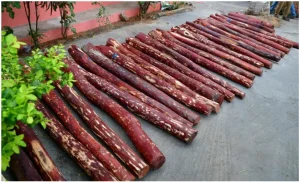![]() 21 Nov 2025
21 Nov 2025

The National Biodiversity Authority (NBA) has released ₹39.84 crore to Andhra Pradesh for the conservation of the endangered Red Sanders species as a part of India’s Access and Benefit Sharing (ABS) initiative.
 Native Range: Eastern Ghats of southern India, especially in Andhra Pradesh (districts like Chittoor, Kadapa, Kurnool, and Anantapur).
Native Range: Eastern Ghats of southern India, especially in Andhra Pradesh (districts like Chittoor, Kadapa, Kurnool, and Anantapur).
Access and Benefit Sharing (ABS) Mechanism
|
|---|
Check Out UPSC CSE Books
Visit PW Store

<div class="new-fform">
</div>
